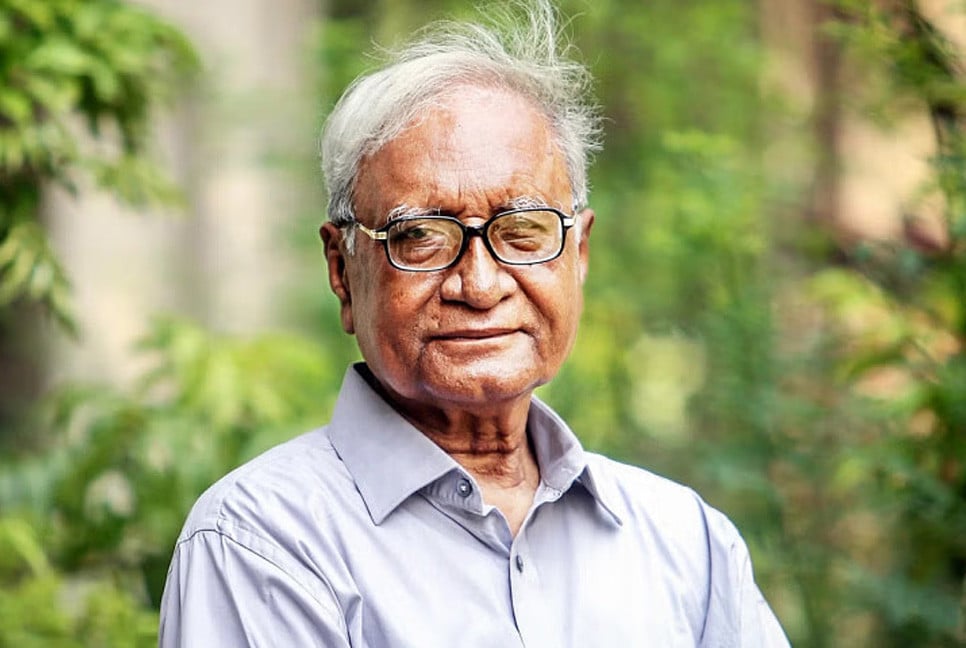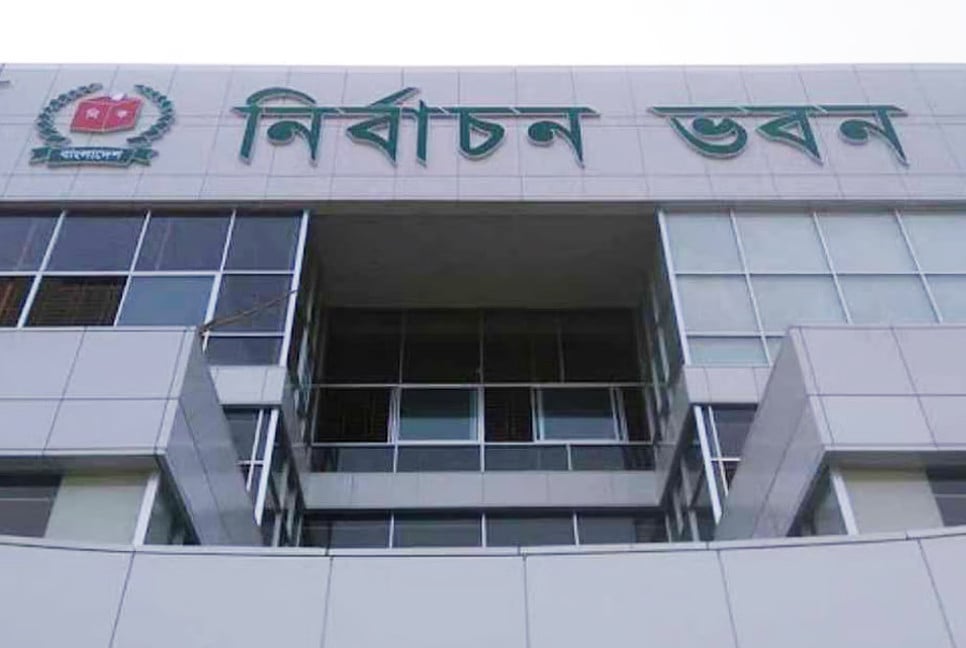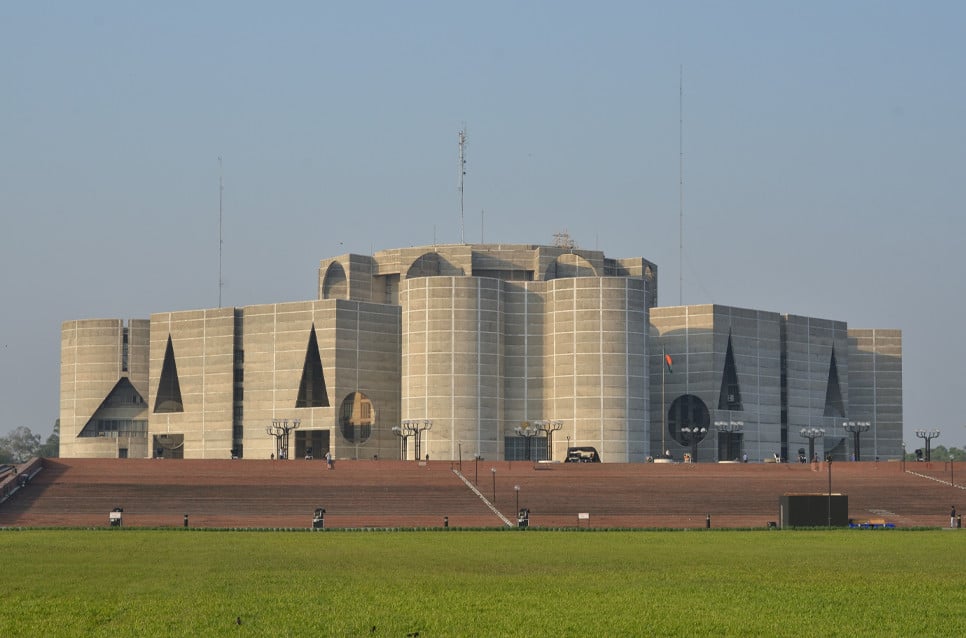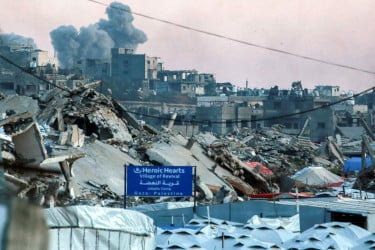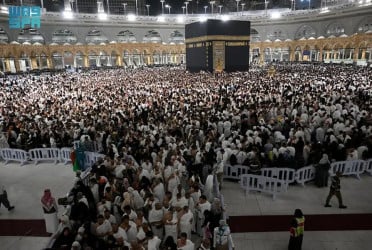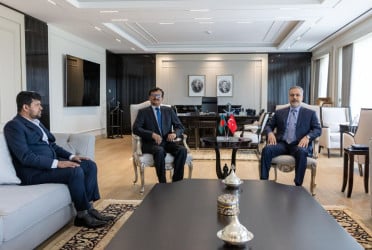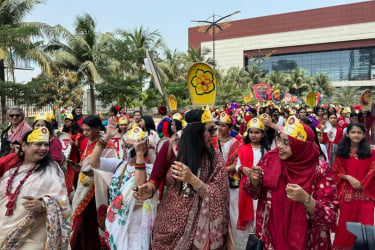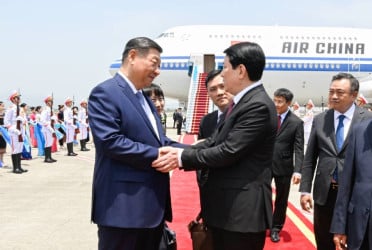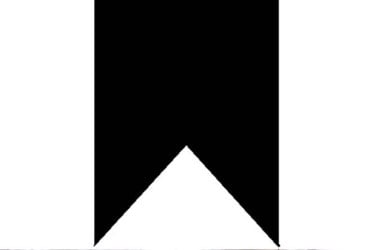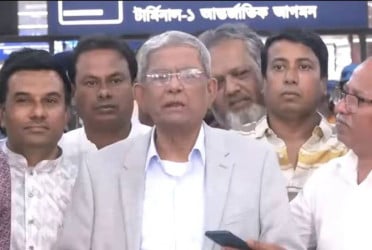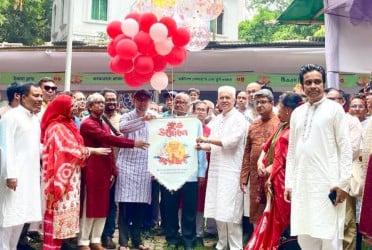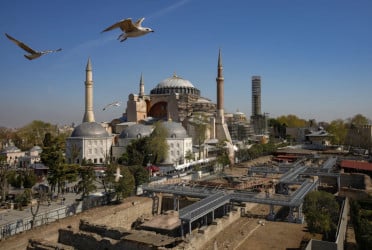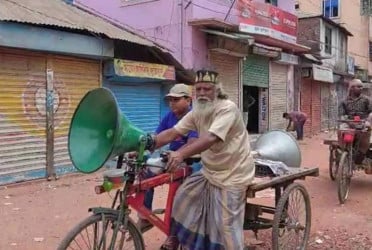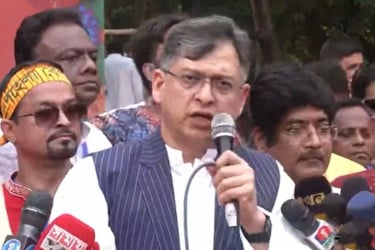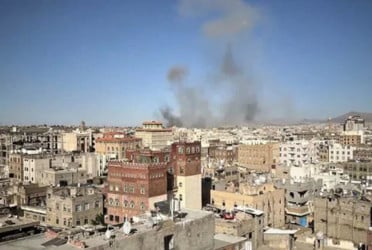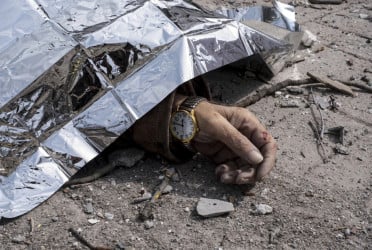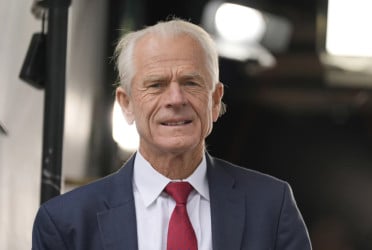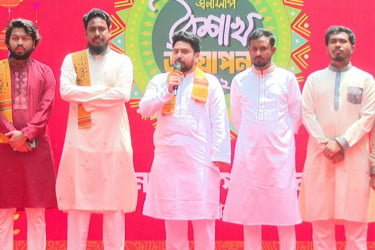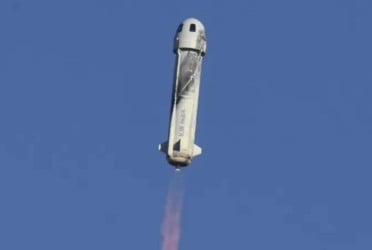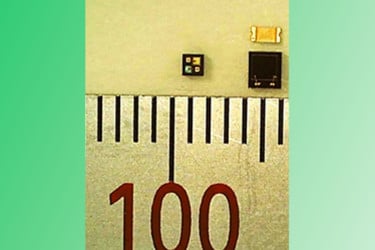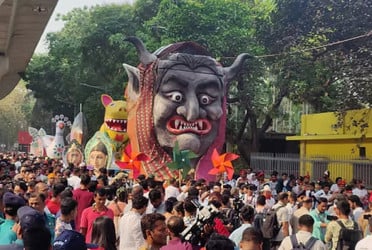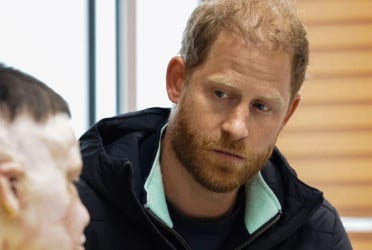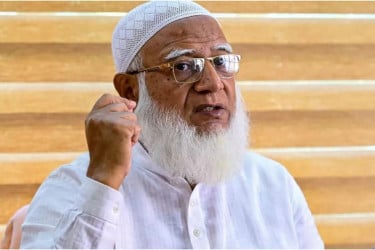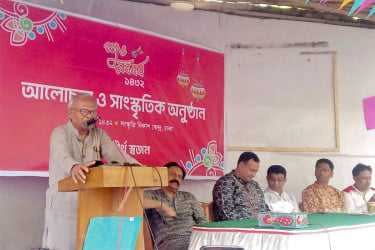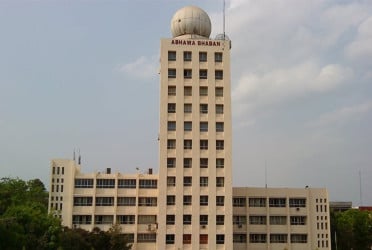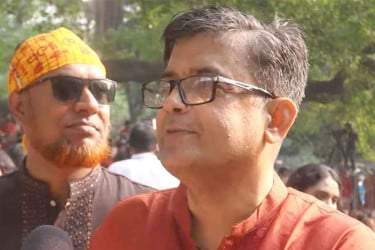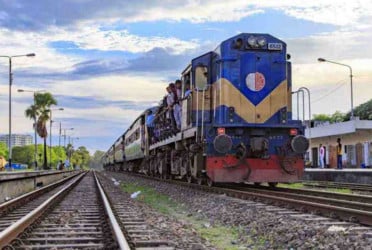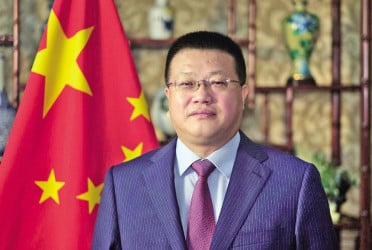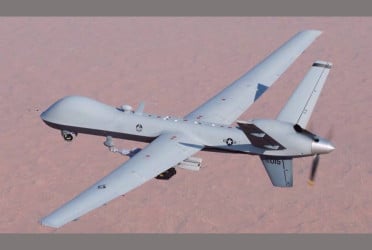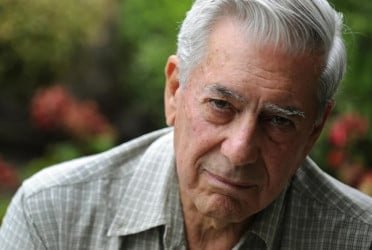Except for a handful of people, everyone regardless of age, financial status, or mental state, spends nights staring blankly at the vast sky. Some find it as the companion of their lone time, while some keep their mind and soul together while staring at the celestial bodies- all the objects that we see in the sky- as they want to quench their thirst for cognizance about those heavenly bodies.
Driven by the mysterious beauty of celestial bodies, many have written poems, while many spend their lives to partly solve the puzzle.
Shahjahan Mridha Benu, a freedom fighter of 1971, is one of those astrophiles who loves driving into the sky and solving the puzzles that inebriated him as he since early life used to stare at the sky for hours and think about the movements of those heavenly bodies.
Benu didn’t narrow himself in seeing the sky, he started to study the mythological chronicles about the constellations. As time passed by, his affinities solidified with planets and satellites.
As soon as he started reading books, aiming to quench his thirst, he came to know that the theories scientists provided about the formation of the universe are an aftermath of Astronomy- the study of everything in the universe beyond Earth’s atmosphere. His interests have grown by leaps and bounds…
“The sky is nothing for animals but the means of forecasting rain and sun, as humans we have to dive deep into the world of perplexing knowledge,” the astronomer and writer said while talking to Bangladesh Pratidin, adding that it has a different meaning for those thinkers, and he looks for the meaning.
As institutional facilities for the study were unavailable, Benu had to face intricacies throughout his learning process.
He paved the way as a pioneering icon in the branch of knowledge. Benu decided to set up an observatory in Dhaka, the first initiative in Bangladesh.
His introduction to Telescope
The 1952-born science devotee served as the founding general secretary and present president of the ‘Anushandhitshu Chokro- one of the leading science organizations founded in 1975. Being a part of the organization, he along with other peers procured 2.5-inch Russian binoculars which could be seen in science museums, telescopes, and some other instruments to materialize his and hundreds of other astrophiles’ dreams. They made Theodolite, Sextant, Telescope stands, Charts, and other instruments.
With the financial support of the former education secretary Kazi Jalal Uddin Ahmed and the cooperation of businessman Mr Amanullah, they bought the country’s then-largest 16-inch reflecting telescope that has widely been used nationwide to observe the sky and show Halley’s Comet.
In October 1984, Shahjahan Mridha Benu and renowned astrophysicist Dipen Bhattacharya jointly created and used the country’s first rectangular 8-inch “coffin box refractive telescope” to observe Halley’s Comet.
Observatory at science museum reminds us of Benu
Benu’s imperativeness to see the sky differently drove him to set up the observatory; he established the first observatory in Bangladesh in 1990. He set the observatory on the roof of the National Science and Technology Museum while he was the president of the Anushandhitshu Chokro.
Benu was in charge of fundraising and making necessary arrangements available to materialize their dream of setting up the first Astro observatory, which was inaugurated on 7th February of the same year.
He finally managed to collect a 16-inch reflecting telescope for the observatory.
He recounts his memory of setting the observatory with a lot of regrets, saying, “Over time that telescope went to the museum.”
“I somehow managed a telescope to see space, but the telescope was destroyed due to crassness,” he said, adding with a sneering laugh in oral commissure, now not the sky, but that broken telescope is being exhibited in the science museum.
He also built an observatory on the roof of his residence building at eastern Bailey Road.
Establishing observatory at Benu Vita
With COVID-19’s spread in 2020, the whole world came to a standstill; even people were restricted from leaving their houses for work. But it didn’t deviate Benu from his ultimate target of setting up a full-fledged observatory. He took the restrictions as a chance to work restlessly, deciding to start working on the observatory that would be the country’s first private full-fledged observatory.
Benu bought land previously in Gazipur's Sreepur, the property now locally known as “Benu Vita” and “Benu Miyar Project”, with his savings to materialize his dream. He gets to work on making a high-rise building which will be the base for the dome and dorms for the visitors.
Along with the excessive workload of the hexagon-building construction, he started collecting observatory-related equipment- Sextant, Theodolite, Telescope, etc.
A Sextant is a device that depicts one-sixth of a circle, primarily used to measure the position of the stars. On the other hand, the Theodolite is an optical instrument for measuring angles between visible points on the horizontal and vertical planes.
This was just the beginning, he had to face difficulties as no roads took the way to the project directly, on the other hand, due to the pandemic there was a scarcity of workforce. He overcame all of the challenges with his wisdom, till the biggest challenge approached- making the dome.
Benu designed and shaped the Dome
The construction of the building is over, now it is time to install the Dome- a protection to protect the delicate instruments from the elements while allowing the telescope to access the entire sky- on top of this four-story building.
But, due to the restrictions of the lockdown, no one was found interested in the country, and abroad. So Shahjahan Mridha took the responsibility on his own shoulders under a sort of compulsion.
He knew that he needed to design a shape that had a window where the Telescope needed to be placed and also be able to move on its deck. Roaming here and there and using his perceived knowledge, he finally came up with a design on his own keeping all the necessary elements in mind that will make the structure into a Dome.
“Not only has the design but also the implementation work been done by me,” Benu said while recounting the bumpy journey of making the Dome, adding, “Its implementation too needs a lot of engineering excellence.”
He said that experts worldwide asked him to postpone dome-making saying “When the pandemic is over we will discuss the issue”.
As soon as he understood that it was going to be a long wait, he started shaping the Dome following his own design. He took the way to Nawabpur- a well-known place in Dhaka for workshops- and made the structure after several failures. In his words, “I made several mistakes and started from there.”
He became known as a “problem shooter” at a young age for his ability to solve mechanical problems. He has put that signature on this dome too.
Usually, a Dome making costs more than a crore taka and takes 1.5 to 2 years. Since Benu made the Dome on his own, both cost and time are reduced.
Experiencing the Telescope
Listening to the story, I became impatient to see the Dome and put my eye on the Telescope. I told Benu, “We will discuss more after experiencing it.”
I directly took the stairs and went up to the roof of the four-story building, following 72-year-old Benu. Upon entering the Dome, my eye caught a large staircase that directly took me to the loft where the Telescope was set.
Another two people joined Benu when he was pairing the Telescope with the Dome. After completion, Mr Benu called me to the loft. I was getting excited as my dream finally took shape.
As I peered through the telescope at the observatory, the world around me faded away. The cold night air was filled with anticipation as the shimmering stars came into focus. I could see the intricate details of distant heavenly bodies, and galaxies, each a testament to the universe’s vastness.
The silence was profound, punctuated only by whispers of the stargazer. Each sighting felt like a personal connection to the cosmos, igniting a sense of wonder and curiosity. At that moment, beneath the sprawling sky, I felt both insignificant and deeply part of something extraordinary.
Instruments to observe sky
I’ve seen a few Telescopes there. I can especially mention the 14-inch Mid Cassegrain Telescope. The nearly 250-pound telescope has a 14-inch aperture, 3556 mm focal length, and a mirror lock to prevent any unwanted images.
Also, there are 8-inch, 6-inch, 4-inch, and 2-inch telescopes available in this observatory. Most of the telescopes here are made by Orion, the Oscillator Company in the United States. There are also some German, Russian, and Chinese-made telescopes and instruments available.
Besides Lunar Telescopes, there are two Solar Telescopes available; the Sun and its movement can also be observed using them.
The observatory has a special facility for space photography; still images of celestial bodies are being captured using the camera.
“It’s not just like ordinary photography, the cameraman has to wait hours to capture the heavenly bodies,” Benu explained, adding, “Concentration and patience are the first conditions of such photography.”
He plans to install a 100-inch diameter reflector telescope in the future.
The goal is to inspire people
The observatory, set up at Benu’s private initiative, has some limitations. But through this observatory, Benu wants to inform the new generation about space.
“Compared to many developed countries, it has limited capabilities,” said Benu, adding that he wants to keep everyone focused and informed about outer space.
“People will be interested in higher research if they have the opportunity of practicing bookish knowledge.”
Benu expressed the desire to work with the world’s renowned space research organization. Hence, students will discover the limitations and will find a way out.
Even though he could not install all the world’s advanced technologies here, his determination to take this observatory to unique heights.
Moreover, one of Benu’s many virtues is that he acknowledges his limitations and tries to overcome them.
You can have a visit
A group of Dhaka University students visited on the day I appeared there. They said, “We are privileged to have the opportunity of perceiving a first-hand experience of an observatory.”
Habibur Rahman, one of the visitors, said, “If such initiatives are patronized by the government, then it could draw people’s attention widely, increasing the number of researchers in the field.”
When asked about the procedure for visiting the observatory, Benu said, “Anyone can contact us and visit the observatory. There is an ‘astro yard’ where we will make arrangements for ordinary people to observe the celestial bodies.”
However, the institution especially welcomes those who are interested in space.
Some come for astrophotography, while others come for research. People who come here are divided into groups based on their interests. Those interested will have the opportunity to observe space or take pictures with those groups. Anyone can bring their group and observe.
Path that takes you to the observatory
Reaching to the Bagher Bazal of Gazipur, on the Dhaka-Mymensingh highway, get off from the but. Now you might be confused about which road to the observatory, take the opposite road of Bangabandhu Safari Park.
Then hire an Autorickshaw, and keep going into the Bhawal forest area of Gazipur taking the feel of serenity.
There is another easy and old muddy road to reach there, but the authority didn’t allow Benu to reconstruct that road. Benu said, “This is the easiest way to come to the observatory, but the authority denied us to work on it.”
Answering to a question about place selection, Benu said, “Earlier we set an observatory in Dhaka where we had to face difficulties related to Air Pollution and Light Pollution, as these reduce the range of vision.”
High-rise buildings are also a problem as they enclose around the observatory, resulting in a sky-block, he added.
Here, he set the observatory there on the four-storied building to overcome all the bindings.
Bd-Pratidin English/ Afsar Munna






